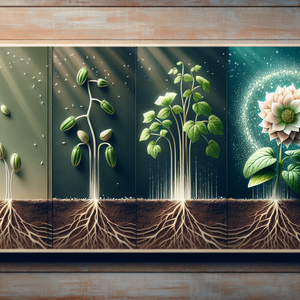The Art of Storytelling in Museums

Storytelling is a time-honored tradition that has the capacity to evoke emotions, ignite curiosity, and create connections. In a museum setting, narratives serve as the connective tissue that binds together various artifacts, placing them within a broader historical or cultural context. This narrative approach not only makes complex themes more accessible but also resonates with diverse audiences. A prime example of this narrative power can be found at the American Museum of Natural History in New York. The "Hall of Ocean Life" goes beyond simply displaying marine specimens; it tells the intricate story of ocean ecosystems, emphasizing the interdependence of species. This narrative invites visitors to engage not just with the objects on display, but with critical issues surrounding conservation and environmental stewardship. Through storytelling, museums can transform artifacts into powerful messages that resonate with contemporary audiences.
Skills for Effective Storytelling
Creating compelling museum narratives requires a multifaceted skill set. Museum professionals need to be proficient in research, synthesis, and communication. They must grasp the historical and cultural significance of artifacts while understanding the diverse interests and backgrounds of their audience. Collaboration is pivotal in this process. Exhibit designers, historians, educators, and community stakeholders must collaborate to create cohesive narratives that resonate. The National Museum of African American History and Culture in Washington, D.C., exemplifies this collaborative approach. Its exhibits result from the combined efforts of curators, community leaders, and scholars, ensuring that the stories told are authentic and representative of the diverse African American experience. Additionally, museum professionals should be skilled in the use of technology to enhance storytelling. Digital tools such as augmented reality (AR) and virtual reality (VR) can immerse visitors in narratives, allowing them to experience stories in innovative ways.
The Impact of Storytelling on Visitor Experience
Numerous studies indicate that storytelling can significantly boost visitor engagement in museums. When people connect emotionally with a story, they are more likely to remember their experiences long after their visit. This emotional resonance fosters empathy, prompting visitors to consider perspectives beyond their own. The Field Museum in Chicago showcases this impact with its exhibit "Evolving Planet," which narrates the story of life on Earth over millions of years. Employing immersive storytelling techniques, including life-sized dinosaur models and interactive displays, the museum captivates visitors, making them active participants in the narrative rather than merely passive observers. This approach not only enhances retention of information but also creates a memorable and engaging experience.
Case Studies: Success Stories in Museum Storytelling
Several museums worldwide have adeptly integrated storytelling as a core element of their visitor experience. The "Museum of Broken Relationships" in Zagreb, Croatia, offers a unique exploration of lost love through personal artifacts donated by individuals. Each item is accompanied by a narrative that provides insight into the emotional landscapes of relationships, making the museum a poignant journey through love and loss. Another notable example is the Jewish Museum in Berlin, which employs architecture and narrative to convey the history and experiences of Jewish life in Germany. The building itself acts as a narrative device, guiding visitors through a metaphorical journey that reflects themes of absence, memory, and resilience. By intertwining storytelling with architectural design, the museum creates a comprehensive experience that resonates deeply with its audience.
The art of storytelling in museums is not merely an enhancement; it is a fundamental aspect of their mission. By weaving narratives that resonate with audiences, museums can forge meaningful connections between the past and present, fostering a deeper understanding of cultural heritage. As museums navigate the complexities of the digital age, the importance of storytelling will only increase, offering new avenues for engagement and exploration. In a world inundated with information, the ability to tell compelling stories may well be the key to ensuring that museums remain vital centers of learning, empathy, and inspiration for future generations. The integration of narrative into museum experiences not only illuminates the artifacts on display but also enriches the visitor's journey, making history and culture more relatable and impactful than ever before.
Museum Educator
Natural History Museums, Art Museums, Science Centers
Core Responsibilities
Develop and implement educational programs and workshops that enhance visitor understanding of exhibits through storytelling techniques.
Collaborate with curators and exhibit designers to create engaging narratives that connect artifacts with educational objectives.
Conduct guided tours, utilizing storytelling to foster deeper connections between visitors and the museum’s collections.
Required Skills
Strong communication and public speaking skills to effectively engage diverse audiences.
Experience in curriculum development and a background in education or museum studies.
Familiarity with various teaching methodologies and the ability to adapt narratives to different age groups.
Exhibit Designer
Art Galleries, History Museums, Specialized Exhibitions Companies
Core Responsibilities
Work alongside curators and historians to conceptualize and design exhibits that tell compelling stories through layout, visuals, and interactive elements.
Utilize technology, such as augmented and virtual reality, to enhance the storytelling aspect of exhibits.
Conduct user testing and gather feedback to refine exhibit narratives and ensure visitor engagement.
Required Skills
Proficiency in design software (e.g., AutoCAD, SketchUp) and an understanding of spatial design principles.
Strong storytelling abilities, with experience in creating cohesive narratives that resonate with various audiences.
Background in art, design, or architecture, ideally with experience in a museum or cultural institution.
Curatorial Assistant
Art Museums, Cultural Heritage Institutions, History Museums
Core Responsibilities
Assist curators in researching and developing exhibit narratives that contextualize artifacts within their historical and cultural significance.
Help manage collections, ensuring that items are accurately documented and preserved.
Participate in public programs and events, providing insights into the stories behind the artifacts on display.
Required Skills
Strong research and writing skills, with an ability to synthesize complex information into engaging narratives.
Knowledge of artifact preservation techniques and museum collection management.
A degree in history, art history, or a related field, with internship experience in a museum setting preferred.
Digital Content Creator for Museums
Museums with strong digital presence, Cultural Institutions, Educational Platforms
Core Responsibilities
Create digital narratives and multimedia content (videos, podcasts, social media posts) that enhance storytelling for online audiences.
Collaborate with museum professionals to translate exhibit narratives into engaging digital formats.
Analyze audience engagement data to refine content strategies and optimize storytelling approaches.
Required Skills
Proficiency in digital content creation tools (e.g., Adobe Creative Suite, video editing software) and social media platforms.
Strong writing and storytelling skills, with a keen ability to adapt narratives for different digital formats.
Familiarity with museum practices and a passion for engaging audiences through technology.
Community Engagement Specialist
Cultural Institutions, Community Organizations, Museums focusing on social impact
Core Responsibilities
Develop outreach programs that connect with local communities, promoting museum narratives that resonate with diverse audiences.
Facilitate workshops and discussions that encourage community storytelling, integrating local narratives into museum exhibitions.
Build and maintain relationships with community organizations to foster collaborative storytelling initiatives.
Required Skills
Excellent interpersonal and communication skills, with the ability to engage a wide range of community members.
Strong understanding of cultural sensitivities and the ability to represent diverse narratives authentically.
Experience in community organizing or public engagement, with a degree in social sciences or a related field preferred.


